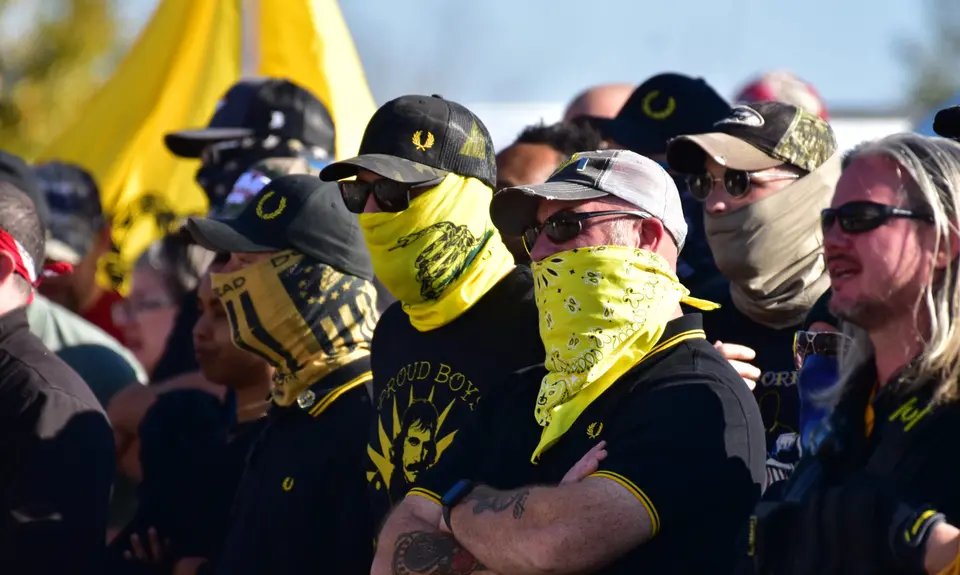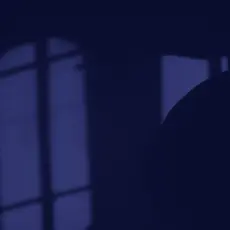Analysis
On Sunday, Proud Boys Canada released a statement claiming that the organization has “officially dissolved.
In the release, leaders of the Canadian branch of the organization stated that the group reached the decision to disband after Canada’s Liberal government designated it a terrorist organization following the Jan. 6 Capitol insurrection. Proud Boys Canada’s inclusion on the list meant that the group’s assets and property are subject to seizure or forfeiture. While the group claimed that the terrorist designation was “not based on evidence or incident,” they admitted that they would not be able to pursue a legal case against the government because they have “no financial support.”
“We were never terrorists or a white supremacy group,” read the statement posted on Telegram via the official Proud Boys channel. “We are just regular patriotic Canadians. We are electricians, carpenters, financial advisors, mechanics, etc. … In the face of a tyrannical leftist government, we regular citizens were banned and outlawed for holding the same beliefs as the men who built this country.”
Despite the group’s apparent demise, there is reason to believe that Proud Boys Canada will continue to operate in some form. Several local chapters of the Proud Boys have already rejected the official statement, adding that regional chapters were independent and were free to make their own decisions. Other members may splinter off into different groups or even join up with existing groups in the far-right landscape. These concerns beg the question: Are the Proud Boys truly finished in Canada?
Founded in 2016, the Proud Boys began as a male-only organization that promoted “Western chauvinism” and challenged political correctness. The group originated in both the U.S. and Canada and was founded by Gavin McIness, a Canadian citizen who grew up in Ottawa, Ontario. Within the first year of the group’s existence, the Proud Boys made national headlines in Canada when five Canadian Armed Forces officers—all of whom were members of the Proud Boys Halifax chapter—interrupted an Indigenous protest ceremony on Canada Day. The five men were dressed in black polo shirts (a style that would soon become synonymous with the group) and carried posters with slogans such as “West is Best” and a Red Ensign flag, Canada's predecessor to the maple leaf standard that symbolizes the nation today.
Over the next few years, dozens of Proud Boys chapters sprouted across Canada, and in cities including Toronto, Montreal, Manitoba, Vancouver, Edmonton, and Calgary. They participated in public rallies and protests, where they became known for “confrontational and at times violent tactics,” according to a report by the Canadian Armed Forces. However, while Proud Boys chapters continued to operate across Canada, they did not garner the media attention that their American counterparts did nor did they appear to be as extreme as some of the U.S. factions.
In the wake of the Jan. 6 Capitol insurrection, the vast majority of online platforms associated with the Canadian branches of the Proud Boys went dark. The Edmonton Proud Boys website, which was used for recruitment purposes, also went offline as reports emerged that prominent Proud Boys members, including the leader of the Proud Boys Hawaii chapter, were allegedly involved in the insurrection. Then on Jan. 12, the Proud Boys faction in Manitoba disbanded due to “differences between our autonomous chapter’s values and how the name is perceived.”
“Although we as an organization have always been opposed to political violence, the recent events in the United States have made it impossible for us to continue,” the group said in an email sent to Global News. “With solid leadership and a proper code of conduct internationally The Proud Boys could have been a great thing.”
Within a matter of weeks, Canada's public safety minister, Bill Blair, announced that the Proud Boys and two neo-Nazi networks, Atomwaffen and The Base, had been added to Canada's terror entity list. While the move was celebrated as a symbolic gesture affirmed Canada’s opposition to domestic extremism as well as a death blow to the organization, it could also embolden its former members outraged by the group’s dissolution to join other far-right entities or form new groups.
Prior to the Proud Boys’ terrorist designation, a group of former Proud Boy members splintered off from the organization and formed a pro-terrorist group known as Canada First. As reported by the Canadian Anti-Hate Network, the group has emerged as a violent neo-Nazi accelerationist movement that “calls for the removal and elimination -- through violent means -- of Jews, feminists, LGBTQIA2S+ people, Black people, Muslims and anyone not white.” The group also sought to target journalists that were critical of their activities.
The Canada First group became active in October 2020, recruiting members and producing propaganda flyers that were distributed across the country, including Ontario and as far west as Vancouver Island. They remain active and are considered to be one of the most extreme groups operating in Canada.
While it is unlikely that the Proud Boys will regain footing in Canada under that brand name, its offshoots such as Canada First remain significant threats to Canadian society. And given that several Proud Boys chapters in Canada have rejected the official dissolution of the group, it is also possible that some chapters will continue to operate autonomously. Others may splinter off into new groups, all of which helps grow the far-right ecosystem within Canada. Even the official Proud Boys group seemed to hint that the group will continue to live on in some form.
“Many will champion and celebrate this decision by the Canadian Proud Boys but this fight for liberty is far from over,” read the official Proud Boys statement on Telegram. “Ideas cannot be legislated and our fire will never be extinguished.”





